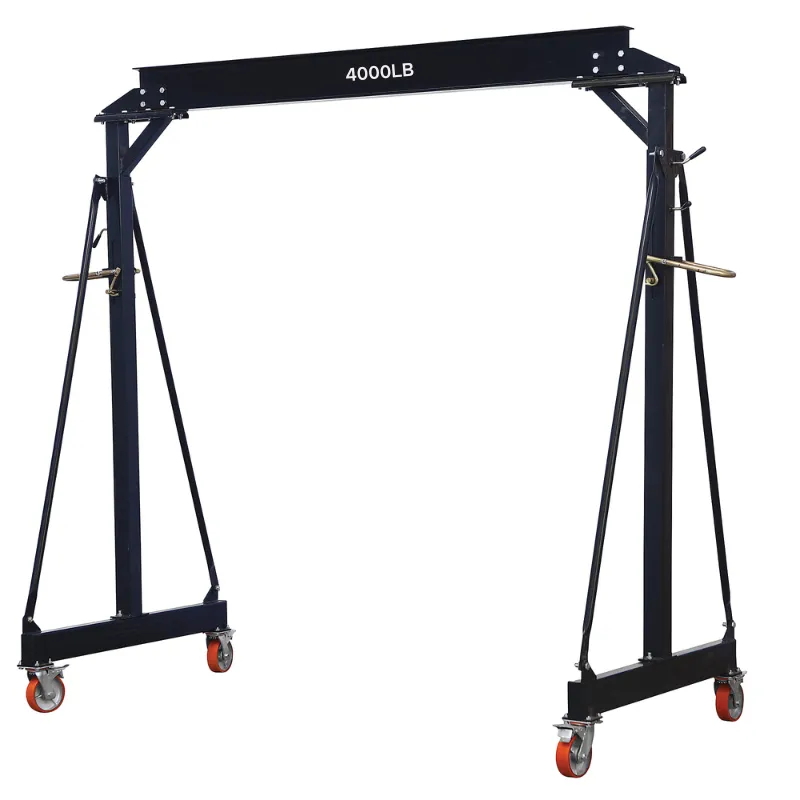gantry equipment
Understanding Gantry Equipment An Overview
Gantry equipment plays a crucial role in various construction and industrial applications, providing essential lifting, moving, and positioning solutions. With its robust design and versatility, gantry systems are favored in settings where heavy loads need to be transported with precision and efficiency. This article will delve into the fundamental aspects of gantry equipment, its applications, benefits, and considerations for choosing the right system.
What is Gantry Equipment?
Gantry equipment refers to structures that support lifting devices, such as hoists, cranes, or trolleys, typically positioned above a workspace. These systems consist of a framework that usually features two parallel legs supported by a horizontal beam spanning the top. This configuration allows for the safe lifting and movement of materials, tools, and machinery across a designated area.
Types of Gantry Systems
There are several types of gantry systems, each designed for specific applications
1. Portable Gantry Cranes These are movable and often adjustable in height, making them ideal for tasks that require flexibility in lifting operations. They are particularly useful in workshops, warehouses, and maintenance yards.
2. Fixed Gantry Cranes Permanently installed, these cranes are suited for heavy-duty operations in manufacturing plants and shipping yards. They usually have more substantial lifting capacities compared to their portable counterparts.
3. Rail-Mounted Gantries These are designed to operate on tracks and are commonly used in shipyards and container terminals. Their ability to move along a fixed path allows for efficient loading and unloading of goods.
4. Overhead Gantries These systems typically span the entire workspace and are designed to lift heavier materials over large areas. They are often used in industrial settings where high lifting capacity is essential.
Applications of Gantry Equipment
Gantry equipment is utilized across a range of industries due to its versatility. Some common applications include
- Manufacturing In factories, gantry cranes assist in the assembly of large components, ensuring that materials are moved efficiently throughout the production process.
- Construction Building sites often rely on gantry systems to lift heavy materials into position, improving safety and productivity.
- Shipping and Logistics Ports and cargo terminals extensively use gantry cranes to move containers, streamlining operations and enhancing turnaround times.
- Maintenance and Repair Workshops employ portable gantry cranes to assist in the repair and servicing of heavy machinery, allowing technicians to lift engines and parts safely.
gantry equipment

Benefits of Gantry Equipment
The advantages of using gantry equipment are numerous
- Increased Safety By providing a structured way to lift and move heavy items, gantry cranes help reduce the risk of accidents and injuries associated with manual handling.
- Efficiency Gantry systems optimize workflow by facilitating the quick movement of materials, thus enhancing productivity in operations.
- Cost-Effectiveness With various options available, organizations can select gantry systems that match their budget, making it a viable investment for many businesses.
- Flexibility Especially in the case of portable gantry cranes, users enjoy the ease of mobility and adaptability to different tasks and environments.
Considerations When Choosing Gantry Equipment
When selecting gantry equipment, several factors must be considered
1. Load Capacity Assess the maximum weight that needs to be lifted to ensure the gantry system can handle it.
2. Span and Height Determine the required dimensions to ensure the equipment will fit adequately within the workspace.
3. Mobility Requirements Consider whether a fixed or portable gantry is more suitable for your operational needs.
4. Material and Durability Evaluate the construction material of the gantry system, as this will influence its longevity and ability to withstand environmental conditions.
5. Budget Finally, ensure the chosen system aligns with your financial constraints while meeting operational demands.
Conclusion
Gantry equipment is an indispensable asset in many industries, facilitating the efficient movement and handling of heavy loads. Its variety of options allows businesses to choose systems that best suit their unique requirements. By investing in the right gantry solution, organizations can enhance productivity, improve safety, and ultimately contribute to operational success.
-
Unlock Seamless Relocation with Our Heavy Equipment Moving ExpertiseNewsJun.06,2025
-
Unleash Unrivaled Flexibility with Our Adjustable Gantry CraneNewsJun.06,2025
-
Unleash Heavy-Duty Efficiency with Our Industrial Gantry Crane SolutionsNewsJun.06,2025
-
Revolutionize Steel Handling with Our Magnetic Lifter RangeNewsJun.06,2025
-
Master Equipment Mobility with Premium Machinery Mover SolutionsNewsJun.06,2025
-
Elevate Your Material Handling with Magnetic Lifter TechnologyNewsJun.06,2025
-
YS Permanent Lifting Magnets: The Smarter Way to Handle SteelNewsMay.22,2025
